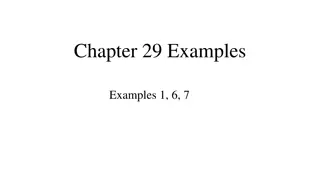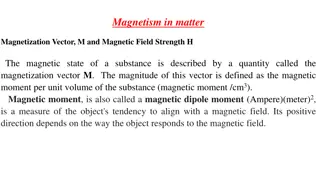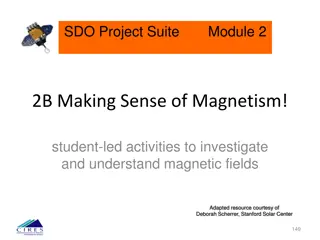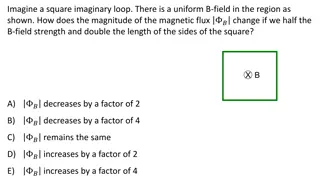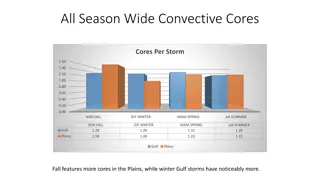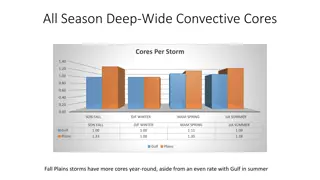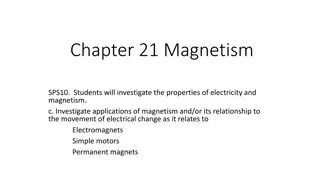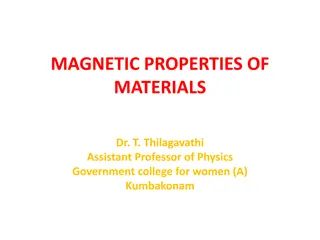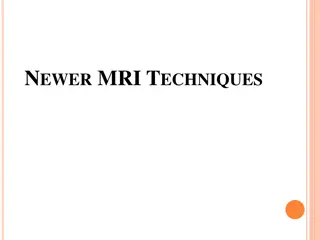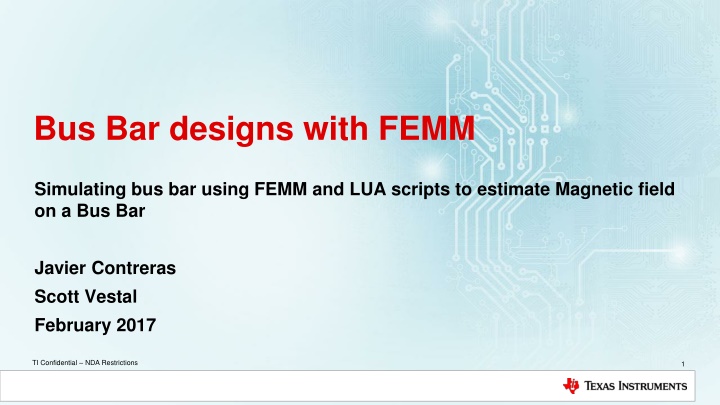
Simulate Bus Bar Designs Using FEMM for Magnetic Field Estimation
Learn how to simulate bus bar designs using Finite Element Method Magnetics (FEMM) and LUA scripts to estimate the magnetic field distribution. Find out about setting up FEMM, running scripts, and defining input parameters for accurate results.
Download Presentation

Please find below an Image/Link to download the presentation.
The content on the website is provided AS IS for your information and personal use only. It may not be sold, licensed, or shared on other websites without obtaining consent from the author. If you encounter any issues during the download, it is possible that the publisher has removed the file from their server.
You are allowed to download the files provided on this website for personal or commercial use, subject to the condition that they are used lawfully. All files are the property of their respective owners.
The content on the website is provided AS IS for your information and personal use only. It may not be sold, licensed, or shared on other websites without obtaining consent from the author.
E N D
Presentation Transcript
Bus Bar designs with FEMM Simulating bus bar using FEMM and LUA scripts to estimate Magnetic field on a Bus Bar Javier Contreras Scott Vestal February 2017 TI Confidential NDA Restrictions TI Confidential NDA Restrictions 1
Installing FEMM FEMM can be downloaded from the official website. http://www.femm.info/wiki/HomePage. TI Confidential NDA Restrictions 2
Finite Element Method Magnetics (FEMM) Basics FEMM uses a Finite Element method to solve electromagnetics problems. Nodes connected by line segments and arcs to define boundary conditions as well as regions containing different materials and current distributions. FEMM then generates a mesh within this problem s geometry, which it uses to solve for the magnetic field distribution within the boundaries. TI Confidential NDA Restrictions 3
Run Script From FEMM Click Open a Lua Script Navigate to location of the scipt Build_Magnetic_Core.lua and select it. Follow the next slides for description of the input parameters. TI Confidential NDA Restrictions 4
Input Parameters for Script File Name This is the name of the file created and saved. It will be save in the folder that contains the script. Note: file name must include .fem extension Core_Depth (dc) This is how much depth in the simulation there is. This is the axis that is not shown in FEMM since this is only a 2D drawing. TI Confidential NDA Restrictions 5
Input Parameters for Script Cont. Core Inside Radius (ri) Core Outer Radius (ro) Air Gap (a) TI Confidential NDA Restrictions 6
Input Parameters for Script Cont. Primary Radius (r) Core Permeability 14000 (Iron) 83000 (Mu Metal) TI Confidential NDA Restrictions 7
Input Parameters for Script Cont. Number of Turns- Secondary Coil number of windings. Winding Angle ( ) TI Confidential NDA Restrictions 8
Input Parameters for Script Cont. PCB Height (hP) PCB Width (wP) Distance from Core (yD) DRV421 Height (hD) is a constant TI Confidential NDA Restrictions 9
Script outputs Filename.fem file with the drawing of the Magnetic Core with input parameters. i. A current on the compensation coil. Compensation current is 1? # ?? ????? . The current is used to calculate the inductance and magnetic core gain. ii. Primary current is zero. TI Confidential NDA Restrictions 10
Script outputs Cont. Filename.ans (answer) file that shows the magnetic field on and surrounding the magnetic core with current on the compensation coil as described in previous slide. TI Confidential NDA Restrictions 11
Script outputs Cont. Lua Outputs. 1. Inductance(H) 2. Core Magnetic Gain (Tesla/Amp) 3. Sensor Location (X,Y) 0.4 mm from top of DRV421 TI Confidential NDA Restrictions 12









